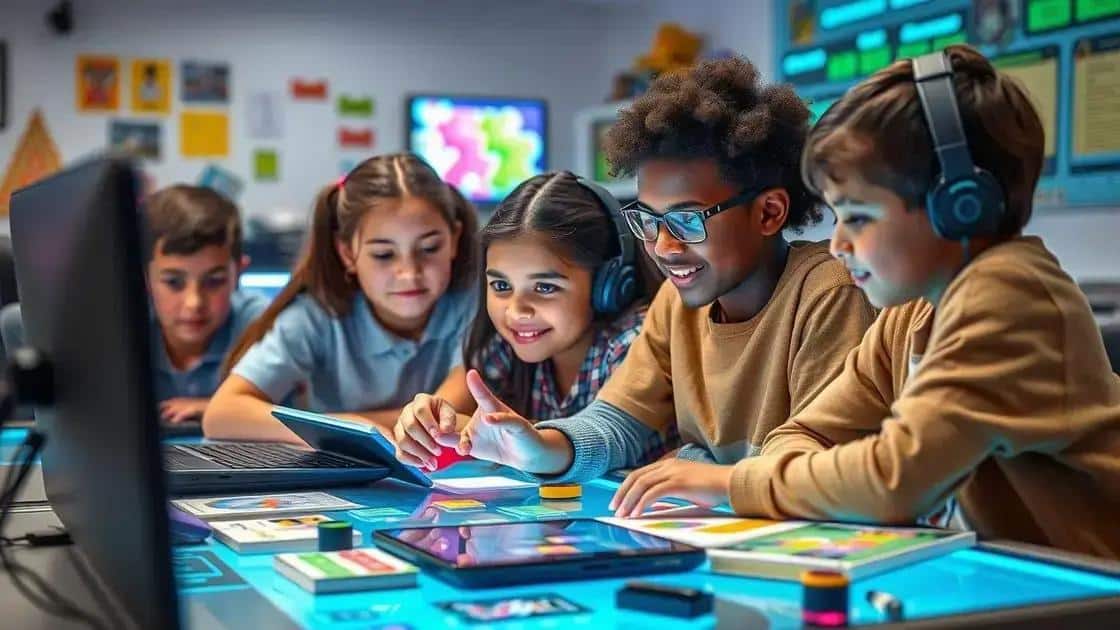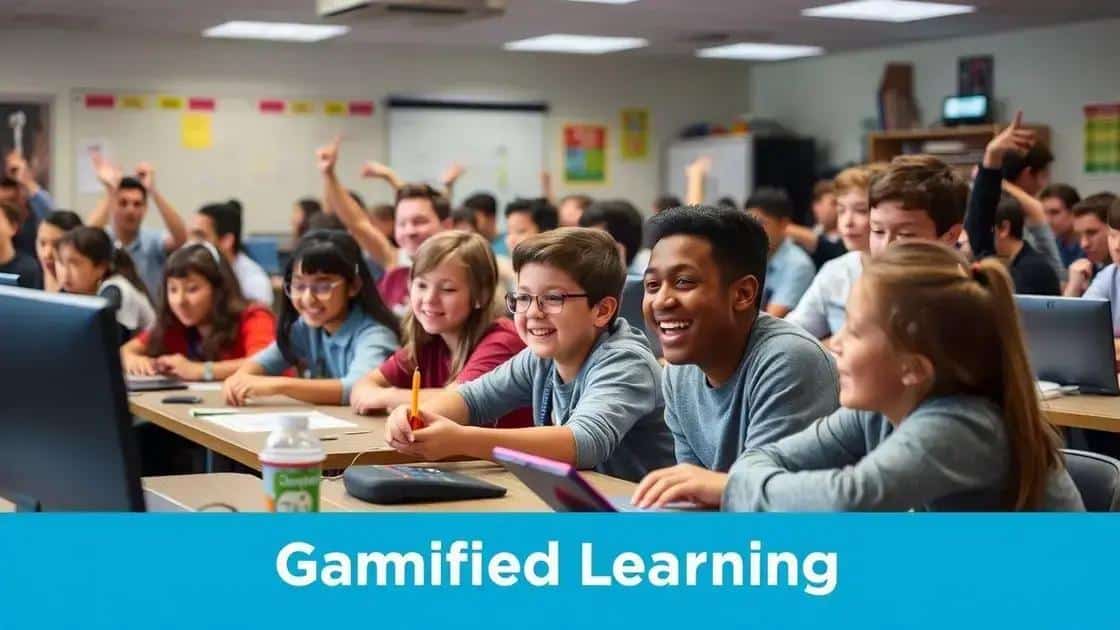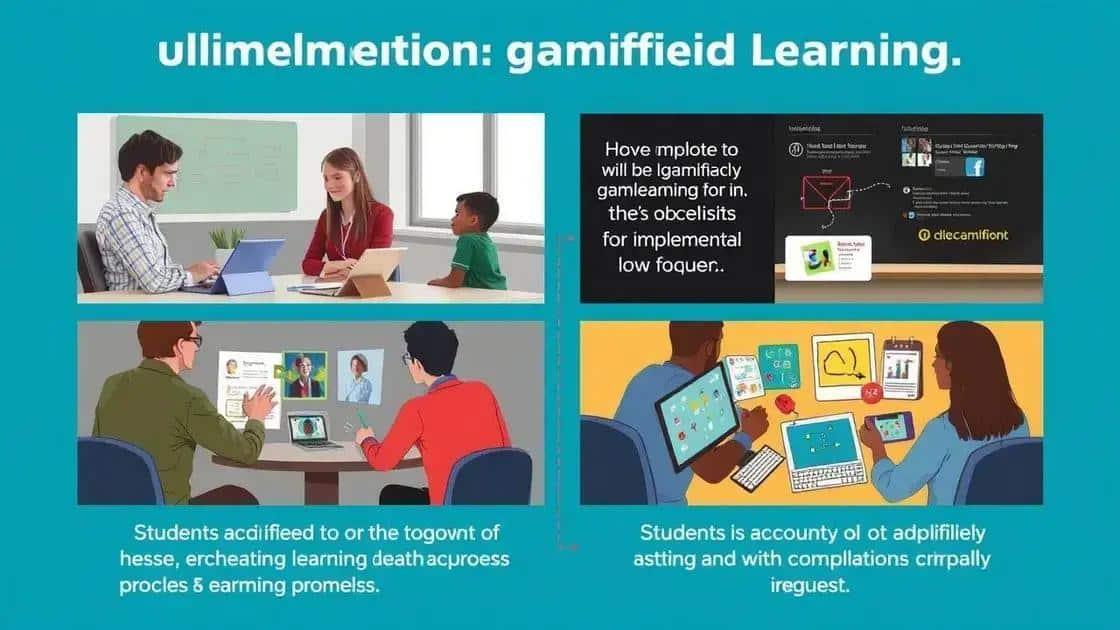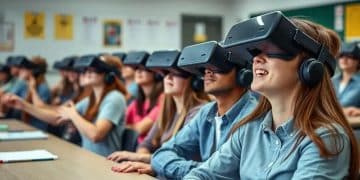Insights on gamified learning platforms for effective education

Gamified learning platforms enhance education by integrating game mechanics, increasing student engagement, motivation, and retention while addressing challenges such as technology access and resistance to change.
Insights on gamified learning platforms can truly transform the way we engage with educational material. Have you ever found traditional methods a bit dull? Let’s explore how playful approaches make learning more exciting and effective!
Understanding gamified learning platforms
Understanding gamified learning platforms is essential for educators and learners alike. These platforms engage students by integrating game-like elements into educational experiences. Imagine learning challenging subjects by playing games that make study time enjoyable!
What Makes Gamified Learning Engaging?
Gamified learning captivates students through our natural love for games. The competition, challenges, and rewards encourage active participation. Let’s explore some features that boost engagement:
- Points and Rewards: Earning points for completing tasks motivates students.
- Leaderboards: Friendly competition among peers can drive learning.
- Challenges: Meeting specific goals helps students focus and achieve.
Additionally, these platforms can adapt to students’ needs. Customizable experiences allow learners to progress at their own pace, making it easier to grasp complex topics. This personalized approach can significantly enhance learning outcomes.
Examples of Successful Gamified Learning Platforms
There are several notable examples of successful platforms. Programs like Kahoot!, Duolingo, and Classcraft illustrate how gamification can transform education. Each utilizes unique strategies to keep learners motivated and engaged. For instance, Kahoot! offers fun quizzes that can be played in classrooms, while Duolingo teaches languages through interactive exercises.
Ultimately, understanding gamified learning platforms reveals their potential to revolutionize education. These tools help create dynamic and flexible learning environments. It’s not just about playing games; it’s about fostering a love for learning that can last a lifetime. Whether you’re a teacher or a student, grasping these concepts opens doors to innovative educational experiences.
Benefits of gamified learning in education

Benefits of gamified learning in education can have a lasting impact on student engagement and learning outcomes. By incorporating game mechanics into education, we can create an environment where students feel motivated to learn. This innovative approach not only makes learning fun, but also enhances retention and understanding of material.
Enhanced Engagement
One of the main benefits is the enhanced engagement students experience. Gamification introduces elements like points, badges, and rewards. These features spark interest and encourage participation. When learning feels like a game, students are more likely to dive in and tackle difficult subjects head-on.
- Increased Motivation: Students are more driven to complete tasks when they earn rewards.
- Active Participation: Gamified platforms encourage students to actively engage with the content.
- Sense of Achievement: Completing challenges gives students a sense of accomplishment.
Additionally, gamified learning also promotes critical thinking and problem-solving skills. By presenting challenges that require innovative solutions, students develop essential skills they can use in real-life situations. Gamification fosters collaboration among peers, making learning a social and interactive experience. Working together to achieve common goals teaches teamwork and communication.
Improved Learning Outcomes
Studies have shown that gamification can lead to improved learning outcomes. Students often retain information better when it’s associated with a game-like experience. This is because gamified learning creates memorable learning moments. Moreover, a comfortable and exciting atmosphere can lower anxiety levels, allowing students to focus and absorb knowledge more effectively.
As we consider the future of education, embracing gamified learning paves the way for innovative teaching methods. The benefits range from enhanced engagement to improved outcomes, making learning a more rewarding experience. By understanding these advantages, educators can harness the power of gamification to create effective and enjoyable learning environments.
Key features of successful gamified platforms
Key features of successful gamified platforms play a significant role in enhancing learning experiences. These platforms not only engage students but also provide measurable benefits in their educational journeys. By combining fun and learning, successful gamification creates an environment where students thrive.
User-Friendly Interface
A successful gamified platform must have a user-friendly interface. This ensures that students can easily navigate through the content. When the interface is intuitive, learners can focus on the tasks rather than figuring out how to use the platform. Visual appeal and simplicity are key factors here, as they enhance user experience.
- Personalization: Allowing students to customize their profiles makes them feel more connected to the platform.
- Clear Instructions: Providing clear instructions helps avoid confusion.
- Responsive Design: The platform should function well on different devices, including tablets and smartphones.
Another important feature is the incorporation of immediate feedback. Timely responses to students’ actions can significantly boost their motivation. Letting students know how they are doing encourages them to improve and keep trying. This instant feedback loop reinforces learning by showing progress.
Challenging but Achievable Goals
Setting challenging yet achievable goals is crucial for student motivation. Each task should come with specific targets that students can strive to accomplish. By gamifying the learning process, it helps break down larger goals into manageable subtasks. This allows students to experience success incrementally, which builds confidence.
Also, incorporating elements like badges and leaderboards can spark competition among peers. Friendly competition encourages students to give their best efforts, as they can see how they rank compared to others. This sense of community can further enhance engagement and motivation.
Integrating storytelling elements can also deepen students’ emotional connection to their learning experiences. A compelling narrative can make lessons more relatable and enjoyable. As they progress through stories, learners often feel invested and eager to continue.
Challenges in implementing gamified learning

Challenges in implementing gamified learning can often hinder the effectiveness of educational platforms. While gamification offers numerous benefits, many educators face obstacles when trying to incorporate these methods into traditional learning environments. Understanding these challenges is vital for successfully utilizing gamified approaches.
Resistance to Change
One significant challenge is the resistance to change from both educators and institutions. Many teachers are accustomed to traditional teaching methods and may feel uncertain about adopting new techniques. This fear of the unknown can create barriers to implementing gamified learning, as educators may doubt its effectiveness compared to conventional methods.
- Comfort with Traditional Methods: Many educators find comfort in familiar teaching practices.
- Lack of Training: Educators may not have the necessary training to use gamified tools effectively.
- Institutional Policies: Some schools may have strict guidelines that limit innovative teaching approaches.
Another challenge is ensuring that the technology used for gamified learning is accessible and reliable. Not all students have access to devices or reliable internet connections. This digital divide can prevent some students from fully participating in gamified activities, leading to disparities in learning experiences.
Balancing Fun and Education
Finding the right balance between fun and education is essential yet difficult. Gamified elements can sometimes overshadow the core educational content, making it easy for students to focus more on the games rather than the lessons. To be effective, the gamified learning experience must seamlessly integrate entertainment with meaningful learning objectives.
Lastly, measuring the effectiveness of gamified learning presents a challenge. Traditional assessment methods may not adequately capture the progress students make through gamified experiences. Educators need to develop new evaluation techniques that align with these innovative approaches to ensure that learning outcomes are met.
FAQ – Frequently Asked Questions about Gamified Learning Platforms
What are gamified learning platforms?
Gamified learning platforms use game mechanics to enhance education, making learning more engaging and fun for students.
How can gamification improve student motivation?
Gamification increases motivation by incorporating rewards, challenges, and competition that make learning feel more like a game.
What challenges do educators face when implementing gamified learning?
Educators may encounter resistance to change, technology access issues, and the need to balance entertainment with educational content.
How can schools ensure all students benefit from gamified learning?
Schools can provide necessary technology and training for teachers to create inclusive gamified experiences that all students can access and enjoy.





